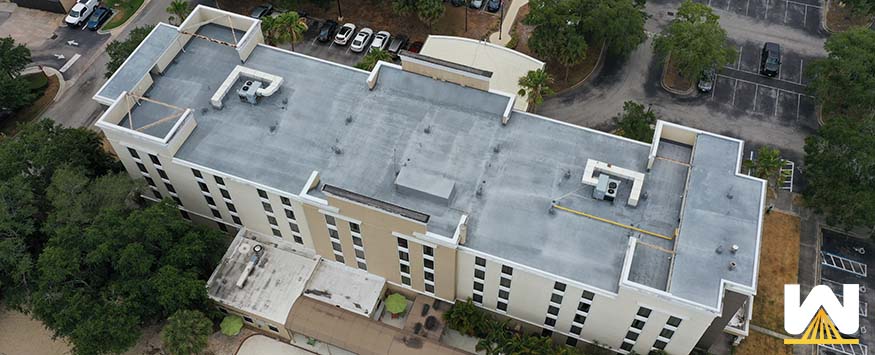A buyback period is the length of time it takes a company to recover the cost of a roof installation through the reduction of energy costs.
A quick example is if your current energy bill is $100/mo. After a new roof is installed, your new energy bill is $50/mo. If the roof cost $1000 to install, it would take 20 months to recover the cost of the roof’s installation.
The buyback period in this example would be 20 months.
Now that you know what the buyback period is, what other questions are related?
- What influences energy usage in a commercial building?
- How can you increase your roof’s R-value?
- What are some real-life examples of buyback periods?
And just so you’re aware, West Roofing Systems has been in commercial roofing since 1979. Many building owners who need a new roof are wisely adding the reduction of future energy costs into their decision-making process.
Every article written by West Roofing Systems has been reviewed, edited, and approved by a commercial roofing salesman with more than 30 years in the industry.
Let’s get started.
What influences energy usage in a commercial building?
Many things influence energy usage, including:
R-value of the roof
The R-value of the roof determines how well it can resist air passing through it. The more R-value, the more air that stays inside the building, and the less the HVAC units need to be used.
Roofs that have water entry points allow the underlying insulation to get wet, which greatly reduces R-value.
Business operations
If you’re a factory that runs hot machines all day, you’ll need more air conditioning to provide a comfortable environment than a regular office building.
If you’re a data center that needs servers to stay at a cool temperature, you’ll need a large amount of cool to keep your computers operating correctly.
HVAC efficiency
If you have an HVAC unit that’s outdated and inefficient, it’ll take more energy to produce the same amount of heat/cool than a more efficient unit.
How to increase R-value?
Adding R-value is how you reduce the amount of heat/cool escaping through the roof, thus reducing the amount of time the HVAC units are running.
If you go with a single-ply roof, the insulation is increased by installing polyiso board. Polyiso has an R-value of 5.5 per inch of thickness.
If you go the spray polyurethane foam route, spray foam creates its own insulation. Spray foam has an R-value of 6.5 per inch of thickness.
What factors into the buyback period?
It depends on the current conditions of the roof. If your roof is in decent shape, and you increase the R-value by 5 or 10, you may reduce your energy costs, but not drastically. Recovering the entire cost of the roof’s installation would be difficult.
Now if you have a roof that has many leaks, has wet insulation, and you’re constantly running your HVAC units, then you have a real shot at recouping your re-roof investment.
What are some real-life examples of buyback periods?
Texas A&M University
From 1980-to 1984, Texas A&M installed spray foam roofs over 27 existing roofs. The cost of the installation was $1,694,000. They reduced annual energy costs by $327,460. The buyback period for these buildings was 5 years and 2 months.
For more information on this project, please click here.
Ford Motor Company
In 1990, Ford re-roofed 900,000 sq. ft. of a roof with spray foam. The cost of the installation is unknown, but we would assume a $1.50 cost per square foot. This would total $1,350,000. They recognized $464,000 in annual energy savings.
The buyback period would be approximately 2 years and 9 months.
Conclusion
Hopefully, you learned what the buyback period is, how it can be obtained, and how it’s calculated. If you’d like to learn more about the spray foam roofing system, please download our “Cheat Sheet” below.


